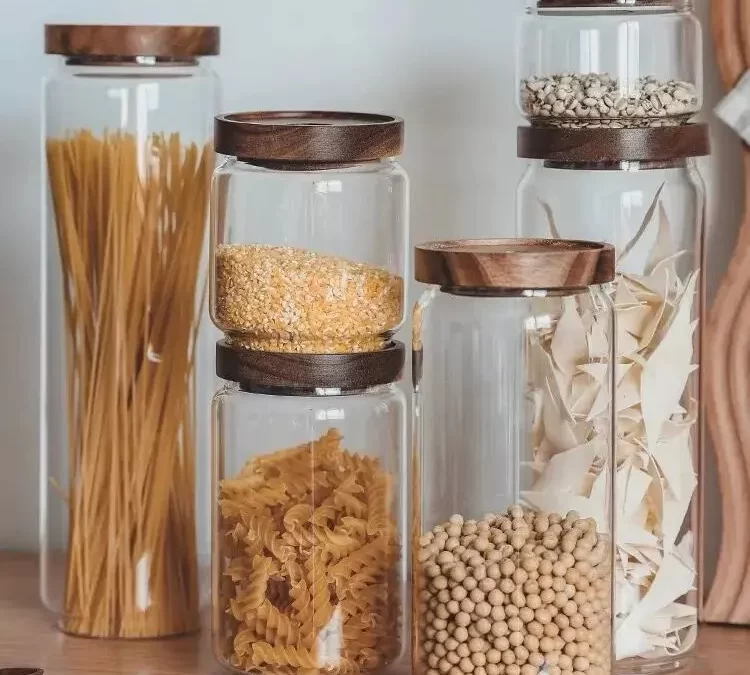Kitchen jars are indispensable storage solutions in any culinary space. From preserving freshness to organizing ingredients, these vessels offer functionality while enhancing kitchen aesthetics. Understanding the diversity of jars available and their ideal uses can transform kitchen organization and food preservation.
Types of Kitchen Jars:
Mason Jars:
- Utility: Known for canning and preserving jams, pickles, and sauces.
- Versatility: Serve as drinkware, salad containers, and pantry organizers.
- Design: Clear glass with a threaded neck and airtight seal.
Hermetic Jars:
- Purpose: Ideal for preserving dry goods like grains, pulses, and herbs.
- Features: Airtight seals maintain freshness and prevent moisture.
- Varieties: Available in glass or plastic, often with clamp lids.
Spice Jars:
- Function: Specifically designed for storing and organizing spices.
- Features: Small, airtight containers to retain flavors and aromas.
- Customization: Come in various sizes, shapes, and materials.
Flip-Top Jars:
- Usage: Suitable for storing liquids, sauces, and dressings.
- Convenience: Easy-to-open lids with airtight seals for spill-free pouring.
- Materials: Often made of glass or BPA-free plastics.
Decorative Jars:
- Aesthetic Value: Enhance kitchen decor and open shelving displays.
- Usage: Can store non-food items or act as vases, purely decorative.
Choosing the Right Jar:
- Material Matters: Glass jars maintain flavors, while plastic jars offer durability and portability.
- Sealing Mechanism: Opt for jars with secure, airtight seals to preserve food freshness.
- Size and Shape: Consider the quantity and type of food to be stored for optimal jar selection.
Maintenance and Care of Kitchen Jars:
- Cleaning Methods:
Handwashing:
- Clean jars with mild soap and warm water.
- Use a bottle brush or sponge to reach the bottom and corners.
- Rinse thoroughly to remove all soap residues.
Vinegar Soak:
- For stubborn stains or odors, soak jars in a solution of equal parts water and white vinegar.
- Allow them to soak for a few hours before rinsing and drying.
- Odor Control:
Baking Soda Absorption:
- To remove lingering odors, place a small amount of baking soda in the jar overnight.
- Wash and rinse thoroughly the next day to eliminate any remaining odors.
Coffee Grounds or Charcoal:
- A few coffee grounds or a piece of charcoal can also absorb unpleasant smells.
- Leave them in the jar for a day or two, then wash thoroughly.
Additional Care Tips:
Storing Clean and Dry:
Complete Drying:
- Ensure jars are completely dry before storing to prevent mold or bacterial growth.
- Air-dry them upside down to allow all moisture to evaporate.
Avoid Extreme Temperatures:
- Store jars away from extreme temperatures to prevent damage to the material or seals.
- Glass jars may crack with sudden temperature changes.
Inspecting Seals and Lids:
Regular Check-Ups:
- Periodically inspect jar seals and lids for wear or damage.
- Replace any worn-out or cracked seals to maintain airtightness.
Long-Term Storage:
Stacking Carefully:
- If stacking jars, ensure they’re secure to prevent breakage or toppling.
- Use padding or separators to avoid direct contact and potential damage.
Proper maintenance of kitchen jars involves regular cleaning, odor removal, and mindful storage practices. Following these steps helps to preserve the integrity of the jars and ensures they remain functional for storing various food items. Contact glass jar suppliers for more information.


